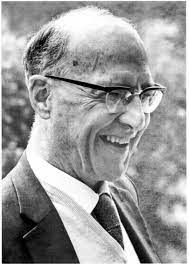
Back مارتن روبرتسون ARZ Martin Robertson German Charles Martin Robertson French Charles Martin Robertson Italian
Martin Robertson | |
|---|---|
 Photograph of Robertson in later life | |
| Born | Charles Martin Robertson September 11, 1911 Pangbourne, United Kingdom |
| Died | December 26, 2004 (aged 93) Cambridge, United Kingdom |
| Resting place | Cambridge City Cemetery |
| Alma mater | Trinity College, Cambridge |
| Children | 6, including Thomas Dolby and Stephen Robertson |
| Parents |
|
| Relatives |
|
| Academic background | |
| Education | The Leys School, Cambridge |
| Academic work | |
| Discipline | Classics |
| Sub-discipline | Ancient Greek art |
| Institutions | British Museum University College London University of Oxford |
| Notable students | Lisa French |
| Notable works | A History of Greek Art (1975) |
| Military service | |
| Allegiance | United Kingdom |
| Service/ | British Army |
| Years of service | 1940–1946 |
| Unit | Royal Signals Intelligence Corps |
Charles Martin Robertson (11 September 1911 – 26 December 2004), known as Martin Robertson, was a British classical scholar and poet. He specialised in the art and archaeology of Ancient Greece, and was best known for his 1975 publication, A History of Greek Art.
Born in Pangbourne, Robertson was the son of a classicist and the brother of a noted art historian. He was educated at The Leys School and Trinity College, Cambridge, and took part in archaeological excavations from 1930. After a period at the British School at Athens, he joined the British Museum in 1936, where he became an apprentice of the art historian Bernard Ashmole. During the Second World War, Robertson served briefly in the Royal Signals before being transferred to intelligence work, in which capacity he was a subordinate of the archaeologist Alan Wace and a colleague of the Soviet double agent Kim Philby.
Robertson succeeded Ashmole as Yates Professor of Classical Art and Archaeology at University College London in 1948. He returned to the BSA in 1957–1958, and became chair of its governing council in 1959. In 1961, once again following Ashmole, he was appointed Lincoln Professor of Classical Archaeology and Art at the University of Oxford, where he remained until his retirement in 1978. Alongside his archaeological work, Robertson wrote and published poetry, releasing four collections of his works in the 1970s. He died in Cambridge in 2004.
Robertson's archaeological publications included material from Ithaca and Perachora in Greece and from the site of Al-Mina in Syria. His work on Greek art developed that of John Beazley, who had pioneered the study of Attic vase-painting in the first half of the twentieth century. His History of Greek Art remained a standard reference for many decades, and in 1983 the museum curator Ian Jenkins wrote that "there can be few students of Greek art who would not readily admit their debt to him".[1]: 208